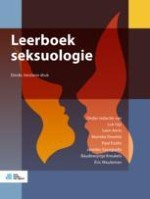Samenvatting
In dit hoofdstuk staat een beschrijving van het complexe verband tussen vruchtbaarheidsproblemen, vruchtbaarheidsbehandelingen en seksualiteit (bij vooral heteroseksuele paren) centraal. Na een kort overzicht van kernaspecten van de fysiologie van de voortplanting, wordt eerst besproken welke seksuele problemen subfertiliteit kunnen veroorzaken en hoe. Vervolgens wordt stilgestaan bij hoe subfertiliteit seksuele problemen kan veroorzaken. Verder worden enkele seksuologische interventies beschreven die in de context van kinderwens of vruchtbaarheidsbehandeling bruikbaar zijn, zoals het aanleren van zelfinseminatie, methoden voor angstreductie, en gebruik van erectiebevorderende middelen of vibratie bij mannen. Om de kans op succes van zowel seksuologische interventies als vruchtbaarheidsbehandelingen te optimaliseren, wordt ervoor gepleit de seksuologische en vruchtbaarheidsinterventies te scheiden. Er wordt ook voor gepleit om na een vruchtbaarheidsbehandeling aandacht te hebben voor seksualiteit. Na het benoemen van een aantal aandachtspunten bij donorschap, worden tot slot de visies op het artificieel helpen realiseren van de kinderwens vanuit verschillende religies op een rij gezet. In dit hoofdstuk wordt de theorie gelardeerd met een aantal gevalsbeschrijving en praktische adviezen en er wordt afgesloten met een korte slotbeschouwing.
